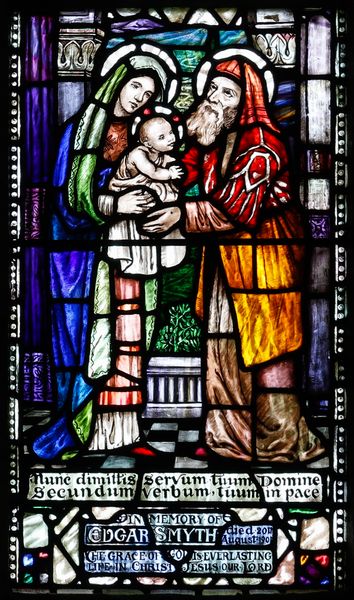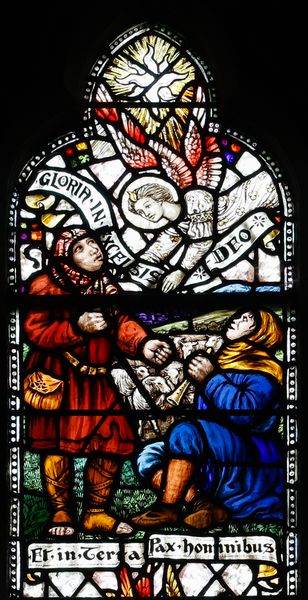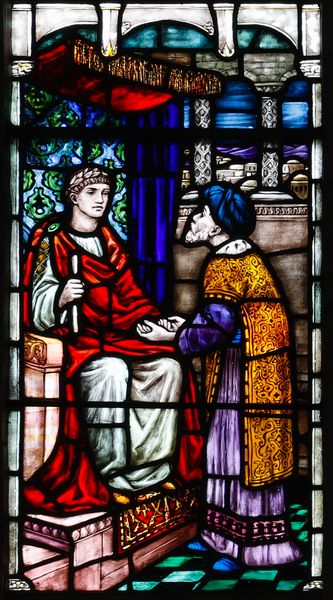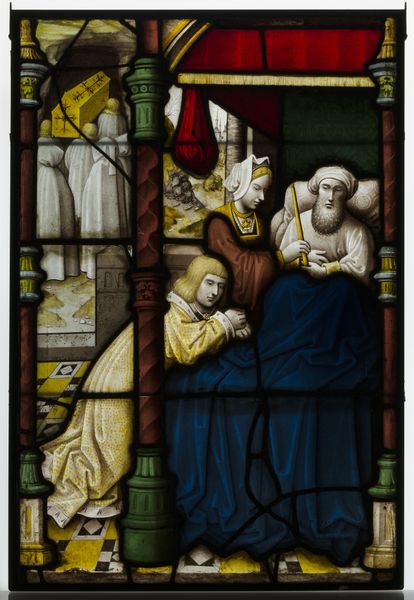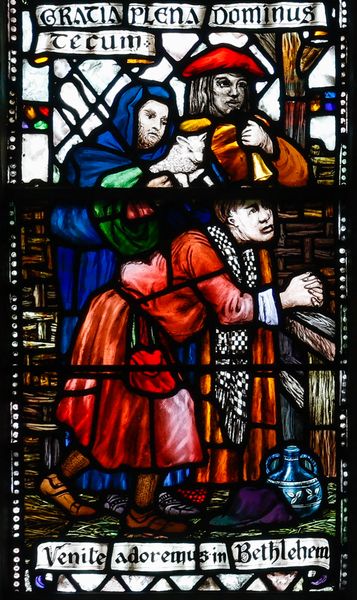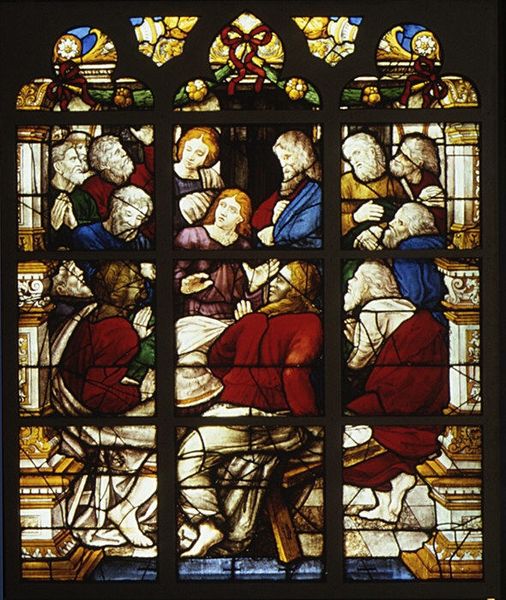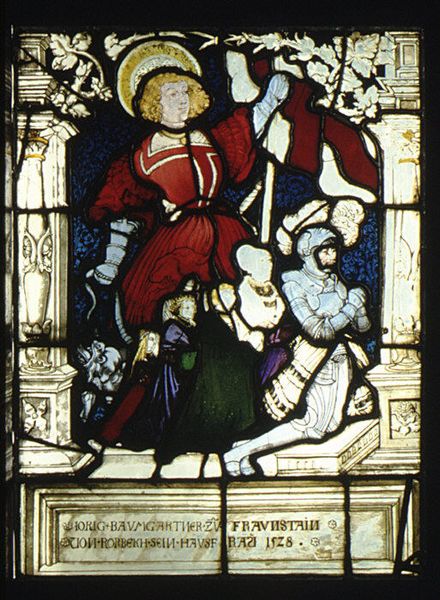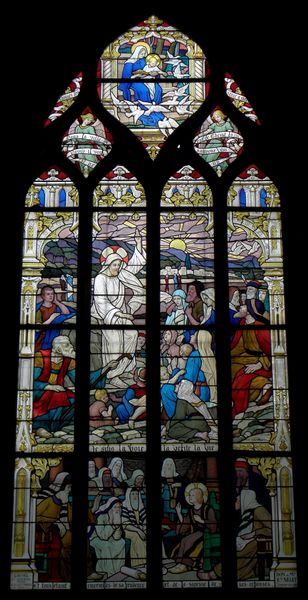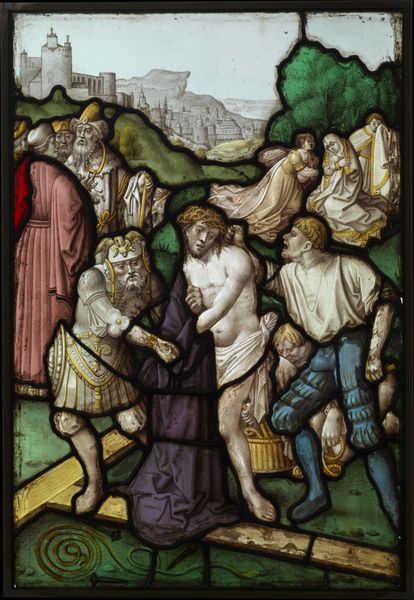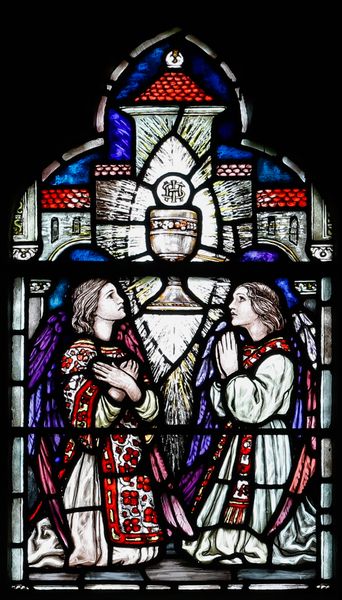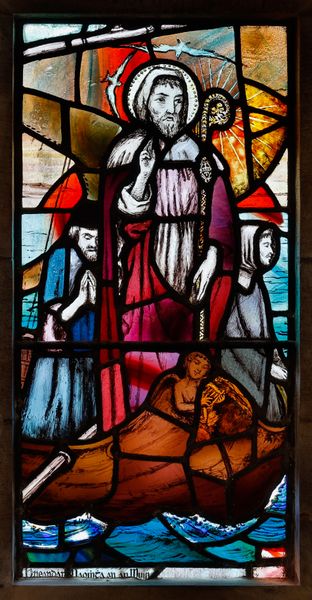
glass
#
medieval
#
narrative-art
#
figuration
#
glass
#
history-painting
Copyright: Public domain
Editor: This is a stained-glass window titled "Loughrea St. Brendan's Cathedral" made by Sarah Purser in 1908. It depicts a scene with Jesus and a crowd of figures. It has a distinct medieval feel, and the faces are really expressive. What catches your eye when you look at this piece? Curator: What immediately strikes me is the complex process of its creation. Think about the selection of each coloured piece of glass, how each contributes to the overall narrative. The lead that binds them, its strength holding together not just the glass, but also this historical moment rendered in material form. It makes me wonder, what was the societal function of such elaborate craftwork in a church setting at the beginning of the 20th century? Editor: It's fascinating to think about it that way. I hadn't really considered the labour involved. Curator: Precisely. Consider also the symbolic nature of glass itself – fragile, yet enduring; transparent, yet capable of transforming light. These aren't merely aesthetic choices but integral to understanding how the narrative is framed. Were these materials locally sourced, reflecting regional artistry? Or were they imported, indicating broader networks of production and consumption? Editor: That's a perspective shift for sure! I'm usually focused on the narrative itself, and the artist's intention. Curator: Of course. However, the "intention" is inseparable from the means through which it manifests. Consider, for example, how the cost and accessibility of coloured glass affected who could create and consume such artwork, thus shaping the very narratives it tells. It's not only the subject, but the means that made its crafting and availability possible that also influence its meaning. Editor: That's a great point. I never thought about stained glass having such strong connections to economy and social status. Now I want to know about the supply chain of early 20th-century glass! Curator: Exactly! The more we look, the more we learn how intertwined the material world is with art history.
Comments
No comments
Be the first to comment and join the conversation on the ultimate creative platform.
